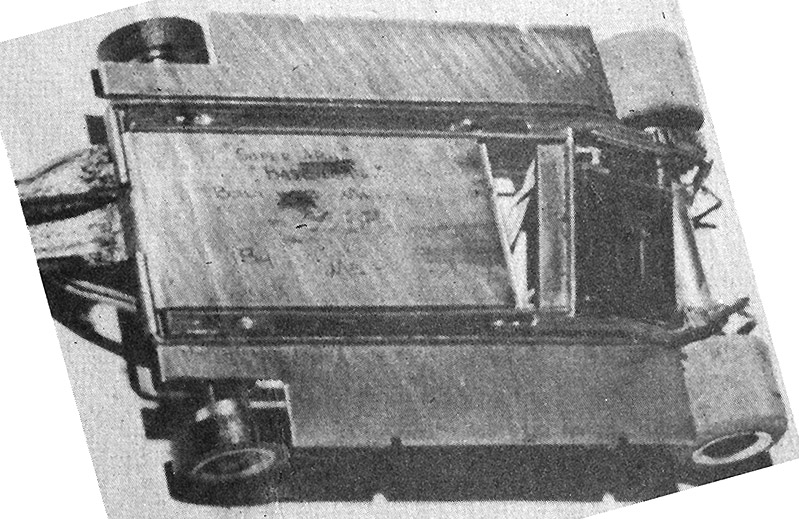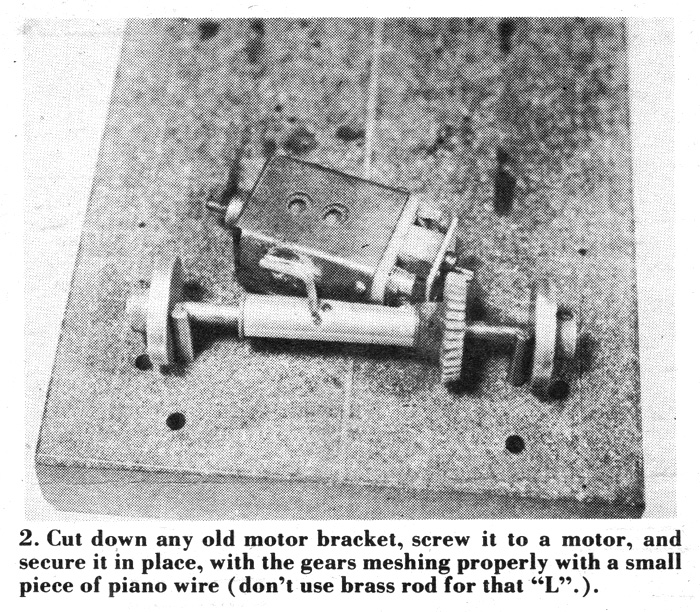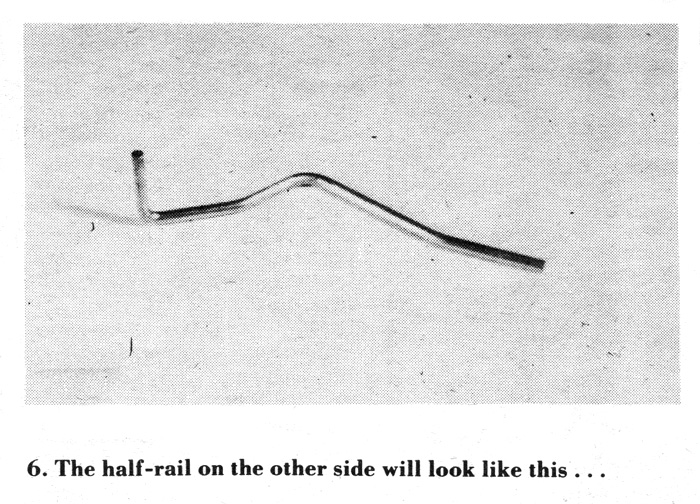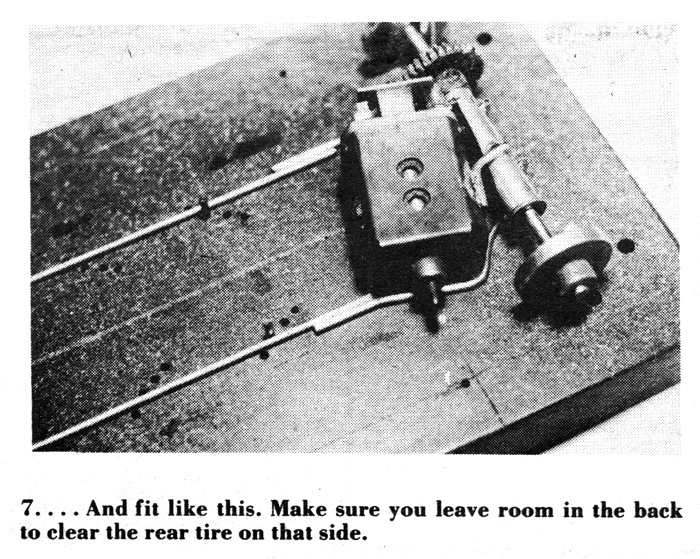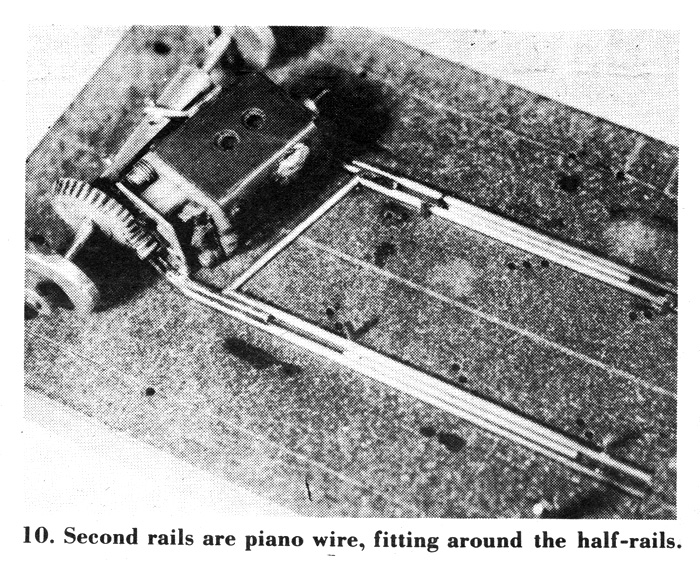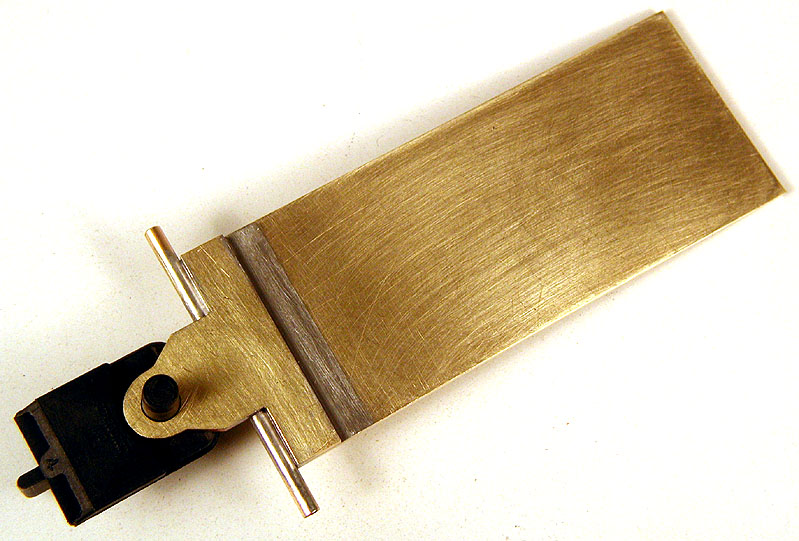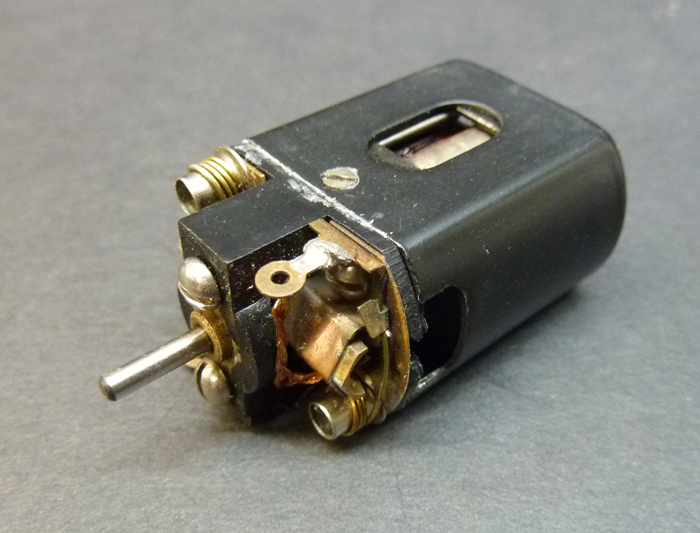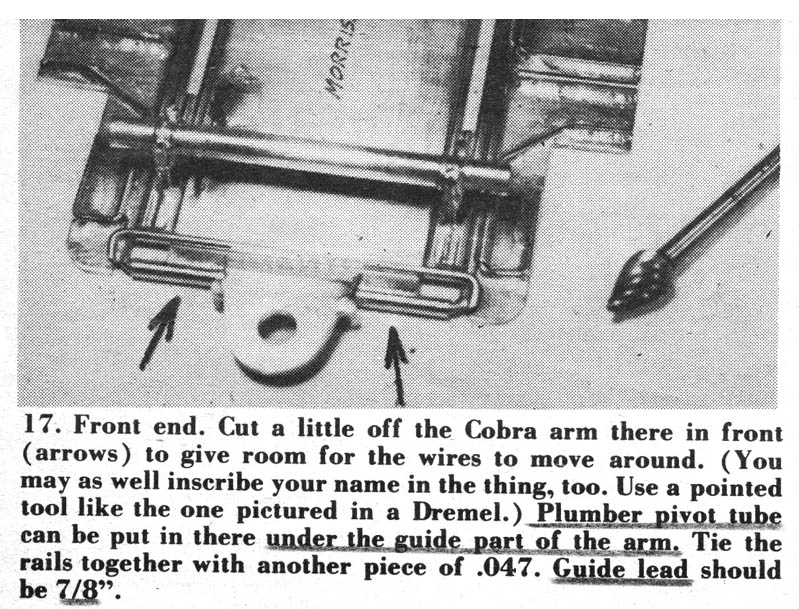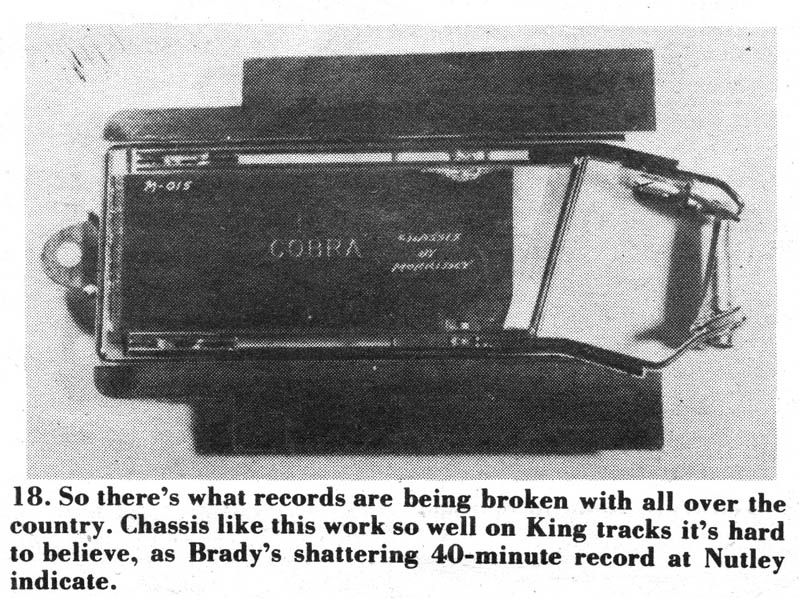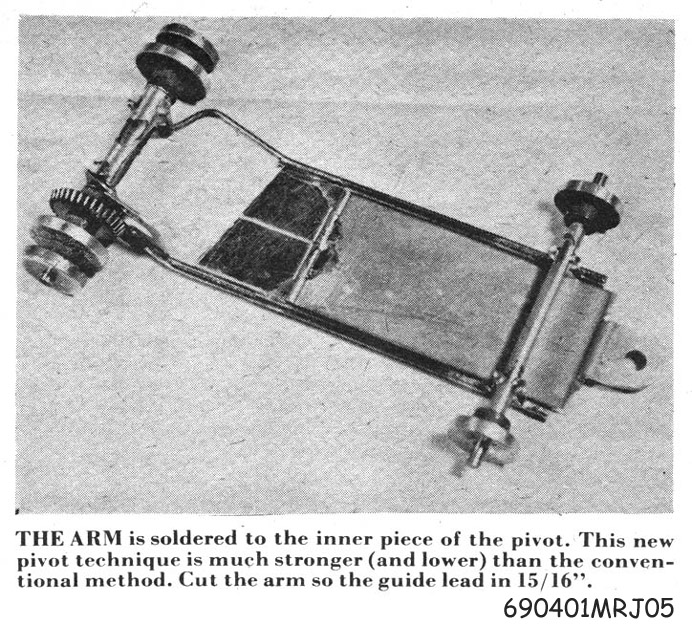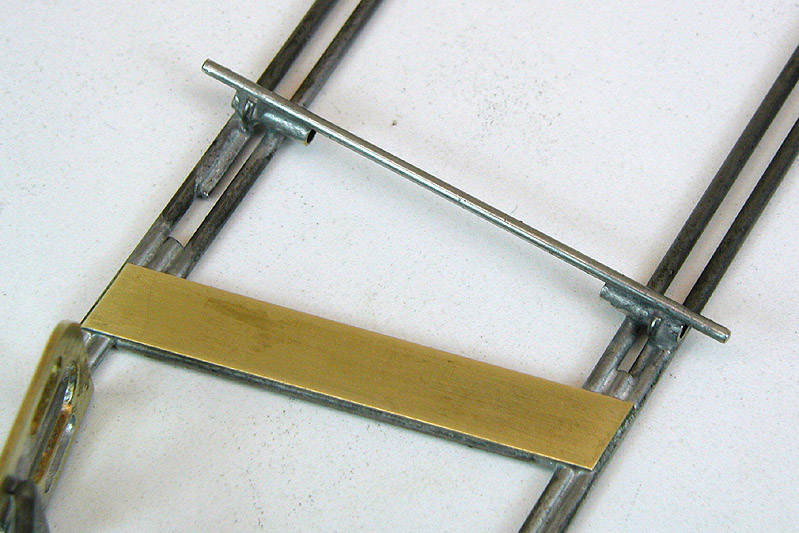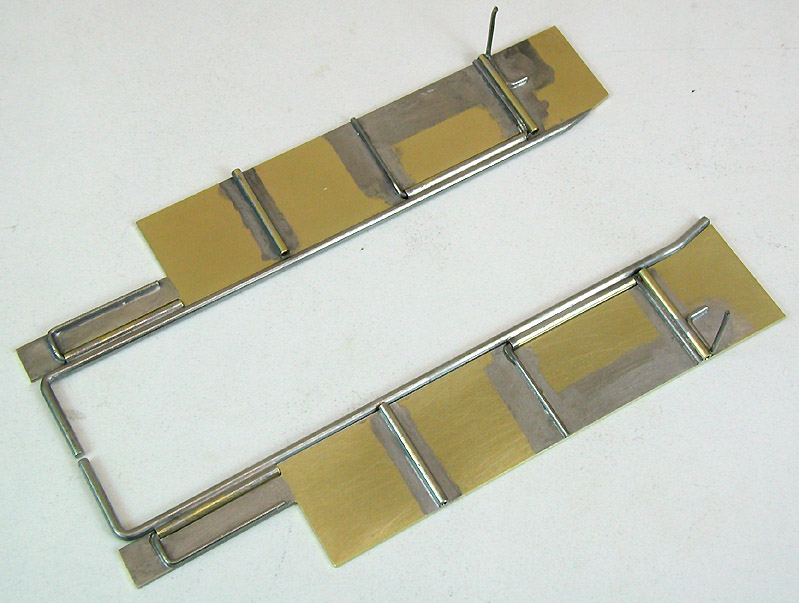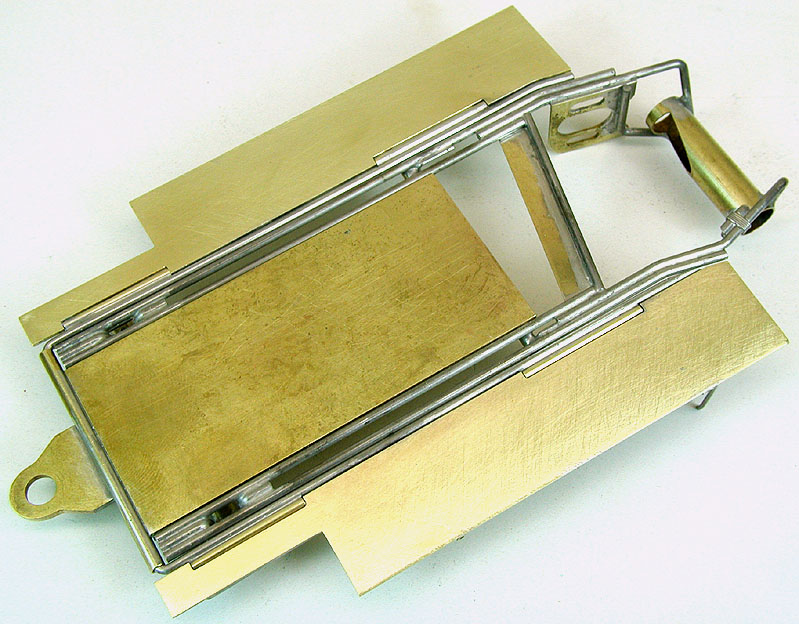Early in 1969, Bob Emott stopped building chassis with motor boxes, and switched to a half-rail design. Model Racing Jounal took notice of this in an illustrated article written by the editor, calling it a no-motor-box rear end, and describing how to build this "revolutionary" new design:
But the half-rail design was not new. As far back as August 1968 at the Cobra Invitational at Buzz-a-Rama in Brooklyn, NY, Jerry Brady won the race with a chassis that had two important innovations: A plumber hinge arrangement and a half-rail center section. Look carefully at this photo of Brady's chassis from the October 11, 1968 issue of MRJ and you can clearly see the half-rail center section:
Between the excitement created at the Cobra Invitational by Sandy Gross' highly innovative Puzzle Pan and four plumber hinge chassis including Brady's race winner, the half-rail design center section got lost in the glare and was not widely noticed until Bob Emott began using it.
On February 8, 1969 there was a manufacturer's race held in Hinsdale, IL at the Hinsdale Raceway. Bob Emott built at least two of the cars that made the main, possibly three; one he ran himself and another driven by Howie Ursaner. Bob probably also built the car entered by Chris Vittucci. Mike Staskie won the race with a motorbox chassis car, but these two Emott half-rail design cars came in 2nd (center) and 3rd (right):
By now the plumber hinge had migrated to the front of the drop arm, but MRJ chose to notice the half-rail design center section first in their write-up.
Here's a close-up of Howie's third place car and an enlarged detail of the Tech Chart:
Note the chassis is sized to fit a Mura endbell and a Champion can, which is significantly shorter than a motor built with the Mura "A" can. With the 1969 rules now allowing 11/16" wide rear tires (up from 5/8"), while the overall width was still limited to 3", it was becoming harder to fit the motor in between the tires.
The nearly identical Emott chassis design that is the subject of this build comes from a topic elsewhere on this blog titled The Emott Archives, post #1:
This chassis is very similar to the one driven by Howie at the Hinsdale race, including the left-side endbell-drive, which requires a clockwise motor. It is dissimilar in that it has a modified stamped drop arm with a separate full-width guide tongue to fit a Jet Flag, a full width one-piece plumber hinge tube and inset side pan hinge tubes.
Bob called this series of chassis "Super Arm Batwinders", presumably because they were built with 1-1/4" wide drop arms.
Here are some of the photos from the illustrated MRJ article describing the latest "chassis revolution", circa February 1969. This is how the center section of this build will be constructed, except with left-side drive and a Champion can instead of a Mura "A" can:
Note the extra bend Mike Morrissey included in the gear-side rail above (for a total of three bends); the Emott design gets the job done with only two bends by leaning the upright inwards to attach to the axle tube. The less bends you use, the quicker and easier the build will go.
Note above the exaggerated rail shape to accommodate the longer Mura "A" can. Again, Mike used an extra bend (for a total of four), where the Emott design gets the job done with only three bends and an inward leaning upright. When building chassis, always try to limit the total number of bends in any one piece of wire or rod to three.
Here's the center section so far:
Some close-ups of the signature Emott details:
I don't have a stamped 1-1/4" wide Cobra drop arm, and even if I did I wouldn't be using it and hacking the guide holder off; intact 1-1/4" Cobra drop arms are far too rare to be doing that. For this build, I will instead use .063" sheet brass for the slab and the guide tongue:
Cutting and notching a piece of 3/32" tube and soldering it all together completes the basic drop arm, shown here with a modern graphite guide:
Finishing off the drop arm with a hinge tube and slipping it into the center section looks like this:
Next up: Attaching the drop arm to the center section and building the plumber.









